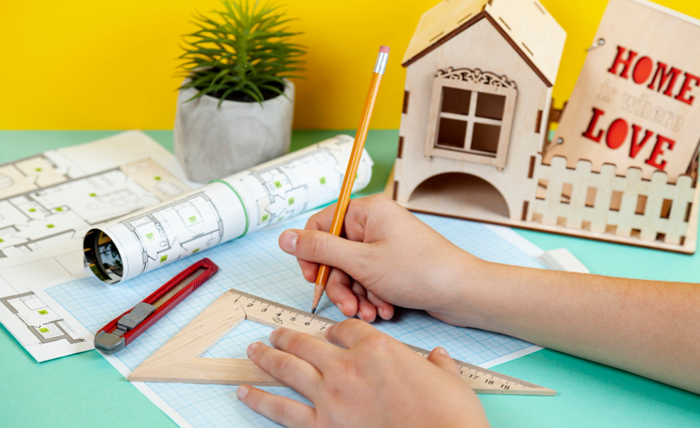
Natural disasters can strike without warning, giving homeowners little time to react. Whether it’s flooding, fire, or severe storms, preparation makes the difference between safety and chaos. A disaster plan protects your family, minimizes damage, and speeds up recovery. For residents, a comprehensive plan is vital due to the area’s specific weather and risks. When disaster occurs, knowing what to do and who to contact for disaster cleanup in Salt Lake City services can help you restore order quickly and safely.
1. Understand the Risks in Your Area
The first step in any disaster plan is understanding your area’s most likely emergencies. Homeowners should prepare for risks like flooding, earthquakes, fires, and severe winter storms. Each disaster demands a different approach. For example, a fire plan focuses on escape routes, while flood preparation involves sandbags and moving valuables. Knowing your local hazards helps you tailor an effective and safe plan.
2. Create an Emergency Contact List
When a crisis hits, communication is key. Compile a list of essential contacts, including family, neighbors, local authorities, and medical providers. Keep both digital and physical copies where everyone in your household can easily find them. It’s also a good idea to choose an out-of-town contact who can relay information if local services are down. Ensure everyone in your home knows who this person is and how to reach them. Reliable communication channels will help you get assistance quickly and stay updated during an emergency.
3. Develop an Evacuation Plan
Every home needs a clear, practiced evacuation plan. Identify at least two exits in every room and ensure hallways and doorways are clear of obstructions. Designate a safe meeting spot outside where everyone will gather after leaving. If your home has multiple stories, place escape ladders near upper-floor windows and teach everyone how to use them. Don’t forget to include pets in your plan by preparing carriers and leashes. Regular drills will help your family respond quickly and calmly in an emergency.
4. Prepare an Emergency Supply Kit
An emergency kit is an essential part of your home disaster plan. It should contain enough supplies to sustain your family for at least 72 hours. Key items include:
- Bottled water (one gallon per person per day)
- Non-perishable food and manual can opener
- Flashlights and extra batteries
- First-aid kit and necessary medications
- Portable phone chargers
- Blankets and warm clothing
- Personal hygiene items
- Copies of important documents
Store your kit in an easily accessible location, such as a closet near the exit or your car trunk. Keeping your supplies updated ensures they remain ready when needed.
5. Safeguard Important Documents
Losing important paperwork during a disaster can make recovery more difficult. Keep critical documents like identification, insurance policies, and property deeds in a waterproof, fire-resistant container. You should also consider creating digital copies and saving them to a secure cloud service or portable drive. Having easy access to these documents will help streamline recovery and insurance claims if your home is damaged.
6. Protect Your Property in Advance
Prevention is just as important as response. Take proactive measures to reduce potential damage before disasters strike. For instance:
- Install smoke detectors and test them regularly.
- Inspect your roof and gutters to prevent water damage.
- Secure heavy furniture and appliances to prevent tipping during earthquakes.
- Trim trees and clear debris from around your home to reduce fire risks.
If a disaster causes major damage, professional cleanup services can restore your home and make it safe to re-enter. Securing your property in advance helps ensure a faster, more efficient recovery.
7. Educate and Involve Your Family
A disaster plan is only effective if everyone in your household understands it. Hold regular family meetings to go over evacuation routes, emergency contacts, and safety protocols. Involve children so they know what to do and where to go during an emergency. Teach everyone how to shut off utilities like gas, water, and electricity. The more familiar everyone is with the plan, the better you’ll all be prepared for an unexpected situation. Knowing your roles will help everyone remain calm, safe, and confident during a crisis.
8. Know What to Do After a Disaster
After a disaster, safety is still the priority. Do not re-enter your home until authorities confirm it’s safe. Inspect for structural damage, gas leaks, or electrical hazards before starting any cleanup. If your home is severely damaged, professional disaster cleanup experts can help restore your property safely. They have the equipment and expertise for debris removal, water extraction, and sanitization, helping you recover faster. Being cautious and getting professional help ensures a safe and complete recovery.
Conclusion
A solid disaster plan provides peace of mind and protection when emergencies occur. Knowing local risks, practicing evacuation routes, and keeping essential supplies on hand can make a significant difference. For homeowners, working with reliable professionals for disaster cleanup ensures your home and family stay safe before, during, and after an emergency.




